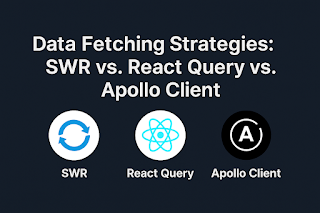Understanding the Virtual DOM and React Reconciliation
Understanding the
Virtual DOM and React Reconciliation
React’s efficiency in rendering UI updates is largely thanks to its Virtual DOM and a process called Reconciliation. Whether you're a frontend developer aiming to deepen your understanding or a future solution architect looking to master optimization techniques, this post is for you.
What is the Virtual
DOM?
The Virtual DOM (VDOM) is a lightweight, in-memory
representation of the actual DOM. React creates this virtual structure to
manage and update UI changes more efficiently.
How it works:
- When
you update the UI, React creates a new Virtual DOM.
- It
compares this new VDOM with the previous one (called diffing).
- Only
the parts that changed are updated in the real DOM.
Why it's efficient:
Direct DOM manipulation is costly in terms of performance. The Virtual DOM
allows React to minimize actual changes, leading to faster rendering and
smoother UI.
What is Reconciliation?
Reconciliation is the process React uses to compare
the new Virtual DOM with the previous version and determine the most efficient
way to update the real DOM.
Key points of React Reconciliation:
- React
identifies the minimum number of changes to apply.
- It
uses a key attribute in lists to track item identity.
- Elements
are matched by type and structure.
Example scenario:
<ul>
<li key="1">Apple</li>
<li key="2">Banana</li>
</ul>
If you reorder the list or remove an item, React uses the
keys to figure out which elements changed and only updates those.
Performance Benefits
- Batching
Updates: React batches multiple updates together to reduce renders.
- Avoids
Full Re-renders: Only components whose state or props have changed are
re-rendered.
- Predictable Updates: The reconciliation algorithm ensures consistent and predictable UI updates.
From Developer to
Architect
Understanding the Virtual DOM and reconciliation is not just
about writing efficient components—it's about designing scalable UIs. A
solution architect should consider:
- Component
hierarchy and structure
- State
granularity
- Proper
use of keys for list rendering
- Minimizing
unnecessary renders for performance
Summary
- The
Virtual DOM is a performance abstraction over the real DOM.
- Reconciliation
is how React efficiently updates the UI.
- Mastering
these concepts leads to smoother apps and better architecture decisions.
💬 What do you think?
How have Virtual DOM and reconciliation helped you in
your projects? Have you ever run into performance bottlenecks because of
improper key usage or unnecessary re-renders?
#ReactJS #FrontendDevelopment #VirtualDOM #Reconciliation #WebPerformance #JavaScript #SolutionArchitecture #ReactTips #UIOptimization #WebDev




Comments
Post a Comment